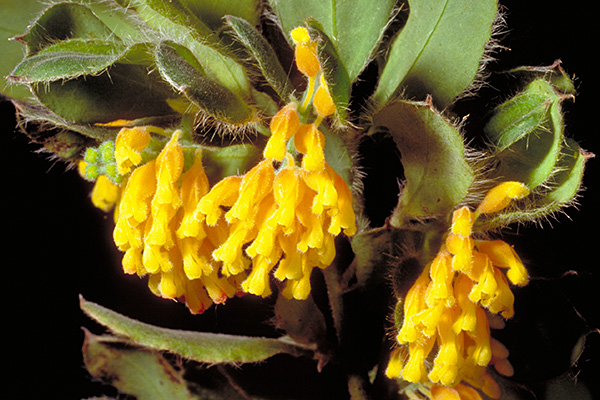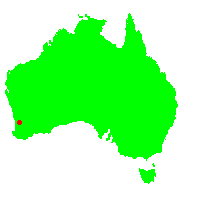General Description:
Grevillea pimeleoides is a very unusual species, certainly not what most people would regard as a ‘typical’ grevillea. The species is usually a erect, medium-sized shrub to about 2.5 metres high. The leaves are covered with fine hairs (pubescent) and are elliptical in shape with a small point at the tips (mucronulate). They are about 50 mm long by 10-15 mm wide. The bright yellow flowers occur in clusters at the ends of the branches and in the upper axils and usually occur from winter through to spring.
There is some confusion regarding Grevillea pimelioides in the horticultural trade. For many years it was sold under the name G.drummondii, which is a separate (but very similar) species. The species can still be found in nurseries as G.drummondii. G.pimeleoides is a very desirable garden plant because of its colourful and unusual flowers. Like many species from the south-west, it can be difficult to maintain for more than a few seasons in humid, wet areas of the east coast. In suitable climates (dry summer), it prefers well drained soils in a sunny or semi-shaded situation. For long term cultivation in other areas, grafting onto a hardy rootstock (such as G.robusta or Grevillea ‘Poorinda Royal Mantle’) is required.
Propagation may be carried out from seed, preferably after ‘nicking’ the hard seed coat to slightly expose the embryo. Propagation can also be carried out from cuttings of firm, current seasons growth which strike reasonably reliably if misting of the hairy foliage is minimised.
* EPBC Act = Environment Protection and Biodiversity Conservation Act 1999;
ROTAP = Rare or Threatened Australian Plants (Briggs and Leigh, 1988)
For further information refer the Australian Plants at Risk page

Grevillea pimelioides
Photo: Brian Walters
 Australian Native Plants Society (Australia)
Australian Native Plants Society (Australia)